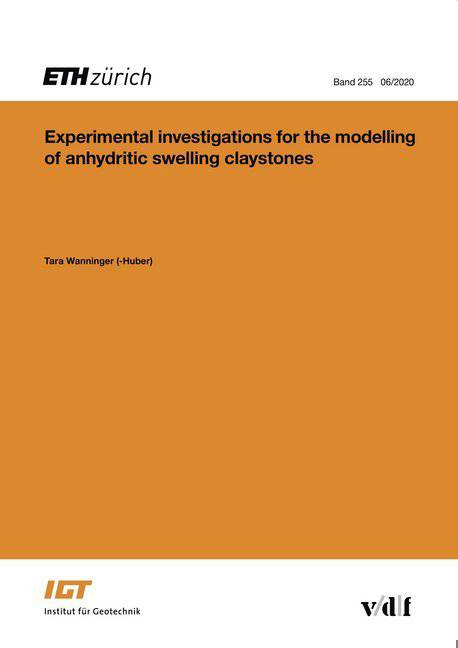
- Retrait gratuit dans votre magasin Club
- 7.000.000 titres dans notre catalogue
- Payer en toute sécurité
- Toujours un magasin près de chez vous
- Retrait gratuit dans votre magasin Club
- 7.000.0000 titres dans notre catalogue
- Payer en toute sécurité
- Toujours un magasin près de chez vous
Experimental investigations for the modelling of anhydritic swelling claystones
Tara Wanninger (-Huber)
Livre broché | Anglais | Veröffentlichungen des Instituts für Geotechnik (IGT) der ETH Zürich | n° 255
87,95 €
+ 175 points
Description
Anhydritic claystones are highly problematic for underground construction because of their swelling ability: When the rock comes into contact with water, the rock volume expands due to swelling of both clay as well as anhydrite. When the expansion is restricted, e.g., by an invert arch in tunneling, the swelling rocks can exert high pressures on the lining and damage the structure. The swelling behavior of purely argillaceous rock (containing solely swelling clays and no anhydrite) can be attributed mainly to osmotic processes and is well understood for the conceptual design of tunnels, as opposed to the swelling of anhydrite, where considerable knowledge gaps exist.Swelling of anhydrite is caused by chemical processes: The anhydrite dissolves when it comes into contact with water, and from the dissolved ions in the pore water gypsum precipitates. The volume of gypsum is greater than that of anhydrite by 61%. During Anhydrite to Gypsum Transformation (hereafter denoted as AGT) the rock mass expands and the pore volume can also increase, for example due to cracking of the rock induced by the pressure exerted by the growing crystals upon a rigid rock structure ("crystallization pressure").This PhD thesis seeks to establish a better understanding and quantification of the coupled chemomechanical swelling processes due to AGT and creates a basis for developing chemo-mechanical models of the swelling of anhydritic claystones.The findings from the experiments verified kinetic models and assumptions related to AGT. Moreover, the systematic experimental investigations regarding the swelling behavior of anhydrite give an indication of a stress-strain relationship which can be implemented and used as a fundamental basis for future modelling of swelling due to AGT. This is necessary for practicing engineers in order to design underground structures in anhydritic rock. Furthermore, it was shown that the swelling due to anhydrite and clay can be de-coupled by varying the testing temperatures, which changes the equilibrium concentrations.
Spécifications
Parties prenantes
- Auteur(s) :
- Editeur:
Contenu
- Nombre de pages :
- 344
- Langue:
- Anglais
- Collection :
- Tome:
- n° 255
Caractéristiques
- EAN:
- 9783728140111
- Format:
- Livre broché
- Dimensions :
- 211 mm x 22 mm
- Poids :
- 1089 g

Les avis
Nous publions uniquement les avis qui respectent les conditions requises. Consultez nos conditions pour les avis.






